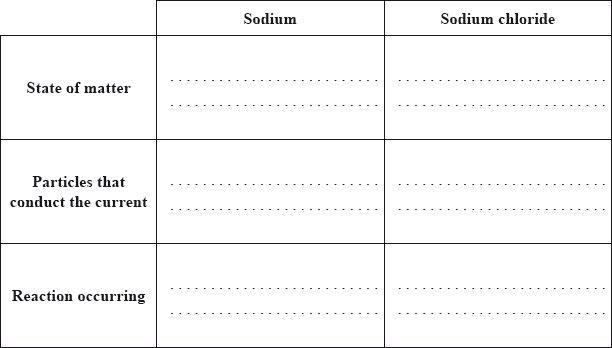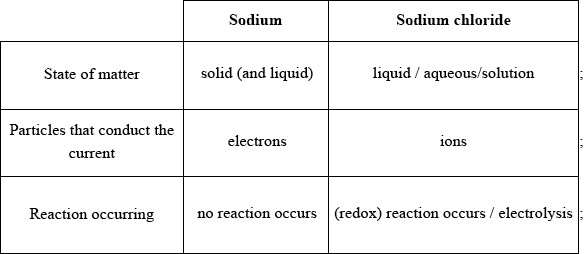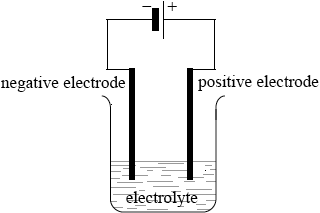Question
Iron has three main naturally occurring isotopes which can be investigated using a mass spectrometer.
A sample of iron has the following isotopic composition by mass.

Calculate the relative atomic mass of iron based on this data, giving your answer to two decimal places.
Calculate the number of electrons in the ion \(^{{\text{56}}}{\text{F}}{{\text{e}}^{2 + }}\).
Describe the bonding in iron and explain the electrical conductivity and malleability of the metal.
Answer/Explanation
Markscheme
\(\frac{{(54 \times 5.95) + (56 \times 91.88) + (57{\text{ }}2.17)}}{{100}}\);
55.90;
Award [2] for correct final answer.
Answer must be to 2 d.p.
24;
metallic (bonding);
positive ions/cations and delocalized/sea of electrons;
electrostatic attraction between the two;
Award [2 max] for description of bonding
Conductivity:
electrons delocalised/free to move;
Malleability:
atoms/ions/cations can move without breaking bonds / atoms/ions/cations can slide
past each other;
Examiners report
Most candidates could correctly calculate the relative atomic mass although a few lost a mark by giving their answers to 1 or 3 decimal places.
Most candidates correctly calculated the number of electrons, but the most frequent incorrect answers were 28 and 54.
The explanation of iron‟s properties was well answered in terms of metallic bonding and most candidates correctly described its electrical conductivity as due to free flowing electrons. However, only a few could explain malleability in terms of the layers of ions being able to slide over each other.
Question
Both sodium and sodium chloride can conduct electricity.
Compare how electric current passes through sodium and sodium chloride by completing the table below.

Sodium can be obtained by electrolysis from molten sodium chloride. Describe, using a diagram, the essential components of this electrolytic cell.
Answer/Explanation
Markscheme

Award [1] for each feature that is correct for both sodium and sodium chloride.
Accept equation or half-equations for the reaction of sodium chloride in “reaction occurring”.

clear diagram containing all elements (power supply, connecting wires, electrodes, container and electrolyte);
labelled positive electrode/anode and negative electrode/cathode;
Accept positive and negative by correct symbols near power supply.
Accept power supply if shown as conventional long/short lines (as in diagram above) or clearly labelled DC power supply.
labelled electrolyte/NaCl(l);
State of NaCl not needed.
Examiners report
Very poorly answered. The state of matter received most marks, conducting particles seldom correct and reaction occurring generally misunderstood by candidates.
Diagrams were very poorly drawn, many without power supplies and the wires within the electrolyte. The electrodes were often mis-signed as Na and/or Cl. Many candidates seem to confuse voltaic cells with electrolytic cells.